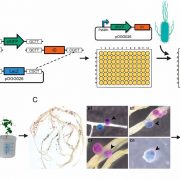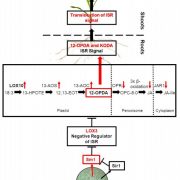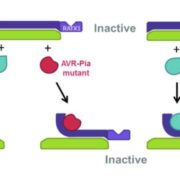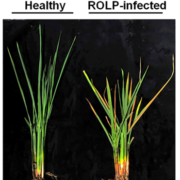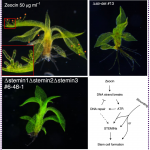Lipo-chitooligosaccharides as regulatory signals of fungal growth and development (Nature Comms)
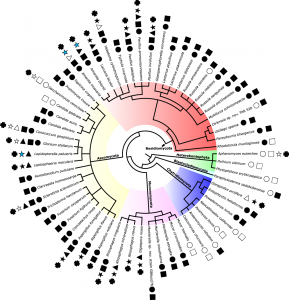 During symbiosis, the rhizobia bacteria rely on their lipo-chitooligosachharide signals (LCOs) to associate with plants. This signal is perceived by plant receptor like kinase, LysM-containing receptors which activate the common symbiosis signaling pathway (CSSM). Fungal symbiosis with plants has also adopted a similar symbiotic pathway. But, are the LCOs signals limited to symbiotic fungi only? To address this, Rush et al. screened 59 species of fungi (covering most phyla) and found LCOs in exudates from 53 fungal species. Structural characterization of LCOs in exudates was done using mass spectrometry, revealing structural similarity across the fungal kingdom. The authors applied various combinations of synthetic LCOs to a saprophytic human pathogen, Aspergillus fumigatus, which showed not only increase in spore germination but also the transcriptional changes in genes related to cell membrane and perception within 30 minutes. Similar observation of fungal growth was seen in a yeast, Candida glabrata (which didn’t show LCOs exudate). Overall, the authors showed that the LCOs are produced by almost all species of fungi and act as regulatory signals for fungal growth and development. (Summary by Sunita Pathak @psunita980) Nature Comms 10.1038/s41467-020-17615-5
During symbiosis, the rhizobia bacteria rely on their lipo-chitooligosachharide signals (LCOs) to associate with plants. This signal is perceived by plant receptor like kinase, LysM-containing receptors which activate the common symbiosis signaling pathway (CSSM). Fungal symbiosis with plants has also adopted a similar symbiotic pathway. But, are the LCOs signals limited to symbiotic fungi only? To address this, Rush et al. screened 59 species of fungi (covering most phyla) and found LCOs in exudates from 53 fungal species. Structural characterization of LCOs in exudates was done using mass spectrometry, revealing structural similarity across the fungal kingdom. The authors applied various combinations of synthetic LCOs to a saprophytic human pathogen, Aspergillus fumigatus, which showed not only increase in spore germination but also the transcriptional changes in genes related to cell membrane and perception within 30 minutes. Similar observation of fungal growth was seen in a yeast, Candida glabrata (which didn’t show LCOs exudate). Overall, the authors showed that the LCOs are produced by almost all species of fungi and act as regulatory signals for fungal growth and development. (Summary by Sunita Pathak @psunita980) Nature Comms 10.1038/s41467-020-17615-5


